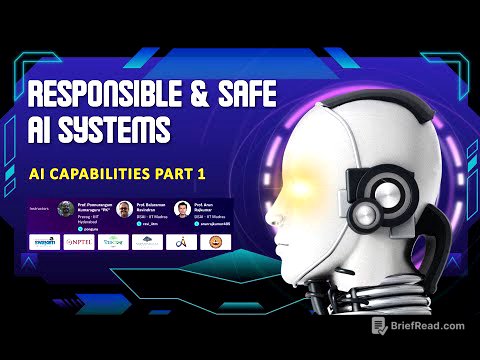TLDR;
The video discusses how modern technology and content are subtly rewiring our brains, affecting our attention spans, memory, and critical thinking skills. It highlights the addictive nature of dopamine-driven content, especially for children, and the potential long-term consequences on cognitive development and emotional well-being. The video also touches upon how language and communication are evolving, potentially eroding our ability to express complex ideas. Finally, it offers practical steps to mitigate these effects and reclaim our cognitive abilities.
- Dopamine-driven content is designed to be addictive, especially for children.
- Our attention spans and memory are declining due to constant stimulation and reliance on technology.
- Language is evolving in a way that may weaken our ability to communicate complex ideas.
- Practical steps can be taken to rebalance our brains and reclaim our cognitive abilities.
Introduction: The Invisible Virus [0:06]
The speaker notices a disturbing trend: people are increasingly distracted and engrossed in superficial content, like cap drivers speeding through reels and housewives obsessively playing Candy Crush. Even bathroom breaks are getting longer and dinner dates are becoming quieter. This suggests an "invisible virus" is spreading, subtly changing our behaviors and attention. Something is rotting our attention and the speaker wants to find out what is causing it.
Coco Melon and Childhood Addiction [1:41]
Coco Melon, a popular children's show, is designed to be highly addictive. The creators use a sinister experiment where children are forced to watch Coco Melon and regular everyday activities. They identify points where the child loses interest and fill those gaps with oversaturated colors and sudden movements to keep the child hooked. This makes the show very hard to differentiate from an actual drug addiction.
Dopamine and Social Media Addiction [3:00]
Tech companies use tricks to trigger dopamine release in our brains, making us addicted to checking notifications. The delay before notifications appear is a calculated move to create anticipation and increase dopamine levels. Social media addiction affects an estimated 210 million people, far exceeding drug addiction. The speaker is concerned about the content today's generations are exposed to and its effects on their brains.
The Dorso Lateral Prefrontal Cortex and Attention Spans [5:28]
The dorso lateral prefrontal cortex is responsible for focus and attention. Modern kids are given tablets and dopamine-driven content to avoid tantrums. This overstimulates their prefrontal cortex, raising their dopamine baseline and making it difficult to pay attention to less stimulating things. Attention spans have decreased from 2.5 minutes in 2003 to under 47 seconds in recent years.
The Hippocampus, the Amygdala and Memory [8:43]
Memories are not recalled as much as they are recreated. The emotion felt while recalling a memory alters the details of the memory itself. Cognitive processes, like using calculators and AI, are externalizing memory recollection, leading to the Google effect, where our brains are less likely to remember information if it's easily found online. Students relying on AI for essays show flatter brain activity and struggle to recall their own work.
Language and Critical Thinking [12:26]
Language is crucial to human intelligence and culture. The German language's compound words reflect a culture inclined towards logic and precision. Spanish has multiple words for love, conveying finer shades of affection. New gen slang is monotonous and replacing articulate vocabulary, potentially eroding a child's ability to communicate complex ideas and think critically.
The Impact of Screen Time and Anhedonia [19:57]
The average Indian spends 5 hours a day on their phone. Constant gratification leads to anhedonia, the absence of enjoyment. Children with more than 60 minutes of daily screen time show higher signs of ADHD. Early screen exposure disrupts emotional development, dulling their ability to read faces and build empathy. There's a lack of regulation concerning children's digital content.
Solutions and Recovery [21:17]
To combat these effects, switch your phone's display to grayscale, block brain rot content, track screen time, set app limits, protect your sleep, practice dopamine rebalancing by doing nothing stimulating for 30 minutes, and recount your day, writing down one thing you're grateful for. It's not easy, but consistency is key.







![Baray Bhaiya Episode 74 - [Eng Sub] - Aijaz Aslam - Maya Khan - Rabya Kulsoom - 28th August 2025](https://wm-img.halpindev.com/p-briefread_c-10_b-10/urlb/aHR0cDovL2ltZy55b3V0dWJlLmNvbS92aS9vdHFoeWxDV01ERS9ocWRlZmF1bHQuanBn.jpg)

